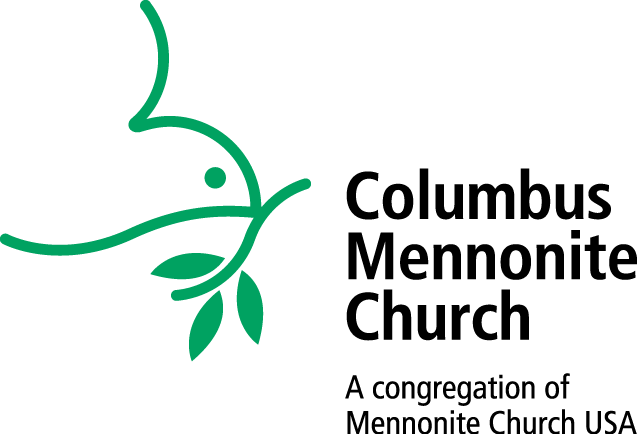City/Garden | September 16
https://joelssermons.files.wordpress.com/2018/09/20180916sermon.mp3
Texts: Jeremiah 29:1-7; Revelation 21: 9-14, 22-25
It’s been observed that the Bible begins in a garden and ends in a city.
If you want to get a little more technical, the Bible begins in the formless and void, and ends with a warning that if anyone changes any of the words in the book of Revelation that God will bring on them the plagues so vividly described within.
But if we’re willing to treat the first chapter of Genesis as something of an introduction, and if we’re willing to bracket the very end of Revelation as a bit of first century copyright language, theologically aggressive as it may be…and if we set aside that rather than being like a single book, the Bible is more like a library of books, representing a tradition that evolves over a period of several thousand years, now bound together under one cover that we might consider how we carry forward this evolving tradition in our time…If we can go with those parameters, then the Bible does indeed begin in a garden, and end in a city.
From garden to city does make for an intriguing narrative arc.
The garden, of course, is the Garden of Eden, which shows up in Genesis chapter two. Scholars have identified this as a second, and likely more ancient, creation story, told after the quite different seven day creation story that begins with the earth being formless and void. Genesis 1 is more cosmic in scale, with humanity not showing up until day six when they are created in the image of God. Genesis 2 focuses on the human being, formed from the dust of the ground, taking their place in a garden. The Garden of Eden. The human’s role is to till and to keep the garden. The first job description…
World: Grief, Beauty | September 9
https://joelssermons.files.wordpress.com/2018/09/20180909sermon.mp3
Mark 3:7-15; 19b-22; 31-35
It’s the first week of Sabbatical, the morning of the first Wednesday of June. Our family is up and out of bed. The energy level is well above average for this time of day. School is out, my email auto-reply is on, our bags are packed up, and we’re about to be off. Our flight to Guatemala departs in just a few hours. Among the many things on the pre-departure checklist was putting a hold on newspaper delivery, starting…tomorrow. Might as well have something to read at the airport.
On our way out, I grab the paper off the front porch and open it for a sneak peek. I’m not expecting much worth dwelling on. But there on the front page of the Dispatch was something to dwell on: A large image with the heading “Too much to bear.” It was a picture of a grieving mother, in, of all places, Guatemala. The caption noted that her name was Lilian Hernandez, and that 36 of her extended family members were presumed dead after the eruption of the Fuego volcano three days prior.
We’d known that the Volcan de Fuego, the Volcano of Fire as it’s called, in south-central Guatemala had erupted that Sunday. It catches your eye when you’ve been planning a trip for months and the airport where you’re supposed to land gets shut down two days prior. It had re-opened, and my thoughts had turned to whether we’d have to adjust our plans to visit nearby Antigua our first weekend there. Then, as we’re heading out the door for our family adventure to start off the World-themed portion of the Sabbatical, a gentle invitation. You want to encounter the World? Here is the World. Let a grieving mother be your tour guide. Or, You want to…
Heart, Soul, Mind, Strength… | Called In: Self | August 19, 2018
Mark 12:28-34
Throughout the summer, we have been exploring the theme “Called In.” We have been hearing about lots of different ways that God calls all of us to be responsive and responsible to the world around us, to speak Good News in places of despair, and to bring healing and hope to all the places that need them, which, if we really think about it, is everywhere. Our exploration of the theme has been focused on the idea of “calling” and listening for the voice of God calling us in to join this work of creating and recreating a new kind of world.
And to give a little more structure to this theme, we’ve been focusing on these concentric circles that started with our call in to the world, then the city, the congregation, and finally, now, to the self. As we’ve gone on throughout the summer, we’ve described these different sub-themes in many different ways. I’ve heard them described as concentric circles, as phases, chapters, or stages. Somewhere along the way I started leaning toward calling them movements to help remind us of their connection to each other and the ways they overlap and are always leading us toward one another.
But at various points throughout the summer, I’ve wondered: Did we start in the wrong direction? We started wide, called in to the world, and now we’ve arrived at the narrow, called in to the self. But every once in awhile I’d think to myself, “Did we get this wrong? Should we have laid a foundation of inner transformation and calling before we started to explore our missional outward calling?”
But then again, I think there’s also some wisdom to the idea that when discerning this call of God to love, we start with the widest net, listening for the voice…
Transformed by God’s Spirit of Truth | Called In: Self | August 12, 2018
Romans 12:1-2; John 8:32 & 14:6; 2 Corinthians 5:17
Speaker: Julie Hart
I love the Mennonite church and joined it almost 30 years ago because of its strong commitment to peace, justice and following Jesus. But, I have been a professor at a Catholic University for the last 12 years where our motto is “Contemplate Truth & share with others the fruits of your contemplation.” I am puzzled that this focus on Truth is not emphasized much in the Mennonite Church. Many Catholics talk about Truth as internally written on our hearts, as a piece of God planted in all of us at birth as offspring of God. I wish the Mennonite church could have helped me understand this aspect of Truth more fully. Gratefully, this emphasis on an internal truth at my Catholic university has led me to understand myself and my research with veterans in a deeper way. I call this Truth our moral identity- our innate sense of right and wrong.
Following ten years of research interviewing 114 pro war veterans who over time transformed into passionate antiwar activists, I realized that the bible, from the prophets to Jesus & Paul and later theologians like Thomas Aquinas, C.S. Lewis and Richard Rohr were describing this same spiritual transformation but focusing on the Truth within, written on our hearts.
Consider Paul’s words in Romans 12:1-2 about the renewing of our minds so we might discern God’s will or truth for us. “Offer your bodies as a living sacrifice to God. This offering is your spiritual worship. Do not be conformed to this world, but be transformed- within- by the renewing of your mind. Then you will know what God wants for you; what is good, true and pleasing to God.
In John 14:6 John quotes Jesus as saying, “I am the way, the…
Called In: Congregation | August 5, 2018
Ephesians 4:1-7,11-16
Many pastors and preachers have probably at some point heard the quote often cited to Karl Barth that we must preach with the Bible in one hand and the newspaper in the other. There’s some debate about if Barth actually said that, but in general the notion stands that as people of faith, not just preachers, we all need to be willing to put our faith tradition in conversation with the world around us. For those of us in the Christian tradition, anything less would be to limit the all-encompassing, holistic nature of the Good News that is meant to permeate all of life and not just prepare us for some ill-defined future existence.
And I think we in this congregation, no matter who is up here on a Sunday morning, do a decent job of approaching this pulpit with the Bible in one hand and the newspaper in the other. But I’ve often thought that this idea needed an addendum, that we needed a third hand or at least a back pocket. You see, I believe that truly good preachers need to have a Bible in one hand, the newspaper in the other, and a copy of the Church directory in their back pocket. Or as our installation this morning might suggest, a library cart full of copies of the Church newsletter following you around.
For just as much as the Good News is not confined to some otherworldly, spiritual plane of existence but is meant to transform the living, breathing, physical world around us, just as much as that is true, I think it is also true that this holistic Good News doesn’t take hold in some impersonal vacuum. The Good News of Christ takes shape through this weird, imperfect, hopeful, frustrating, and beautiful thing we call the Church. …

